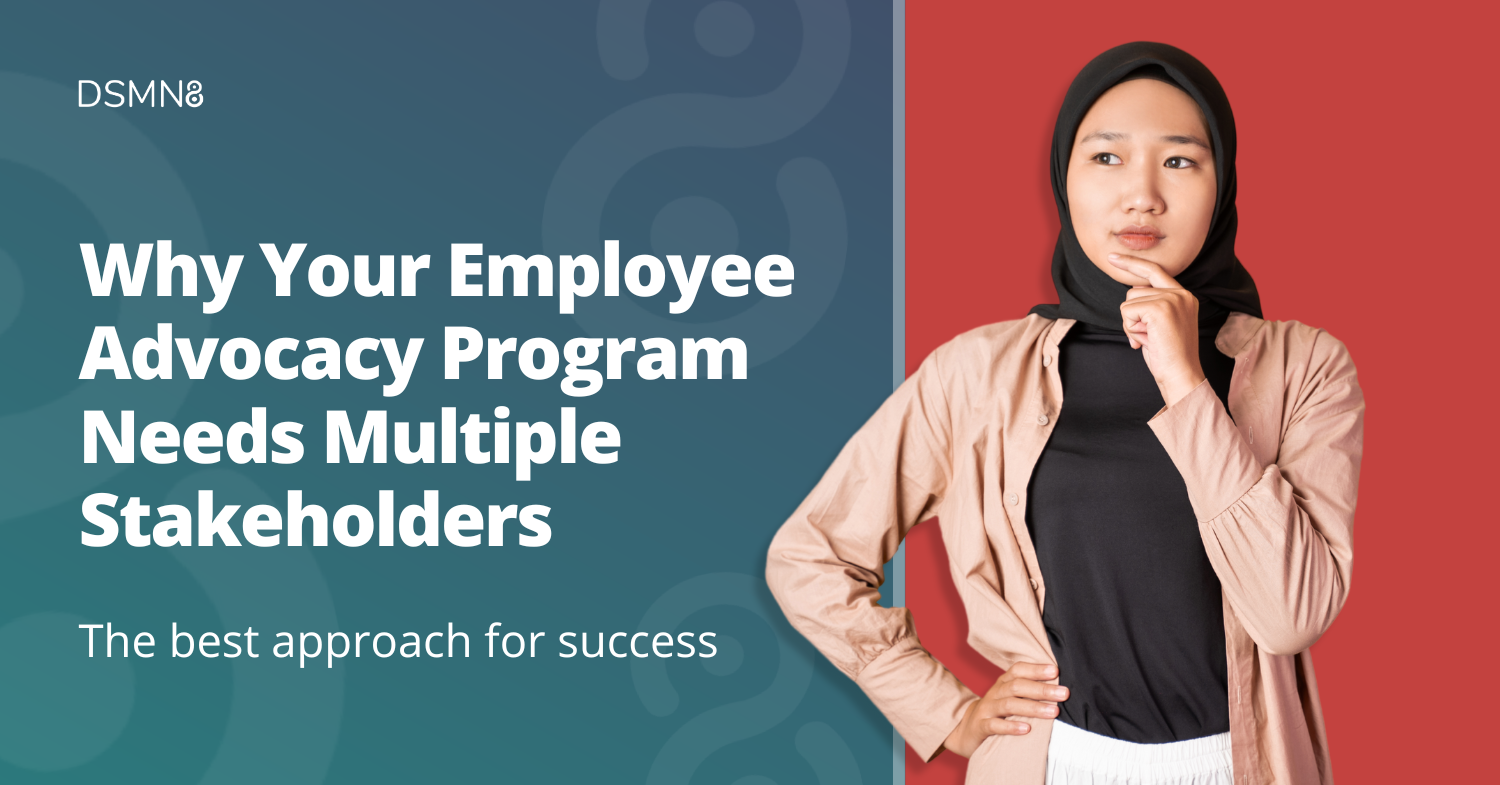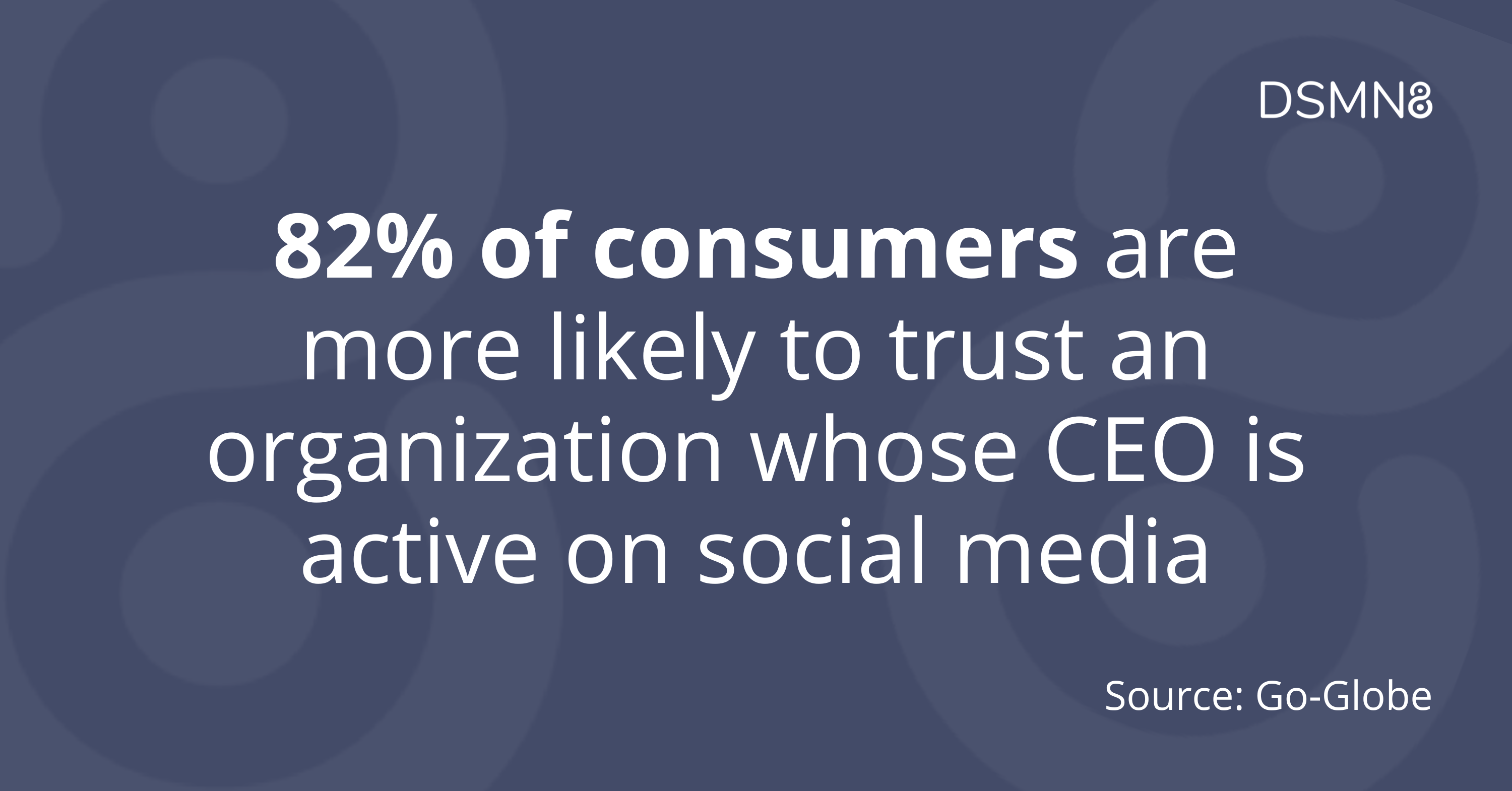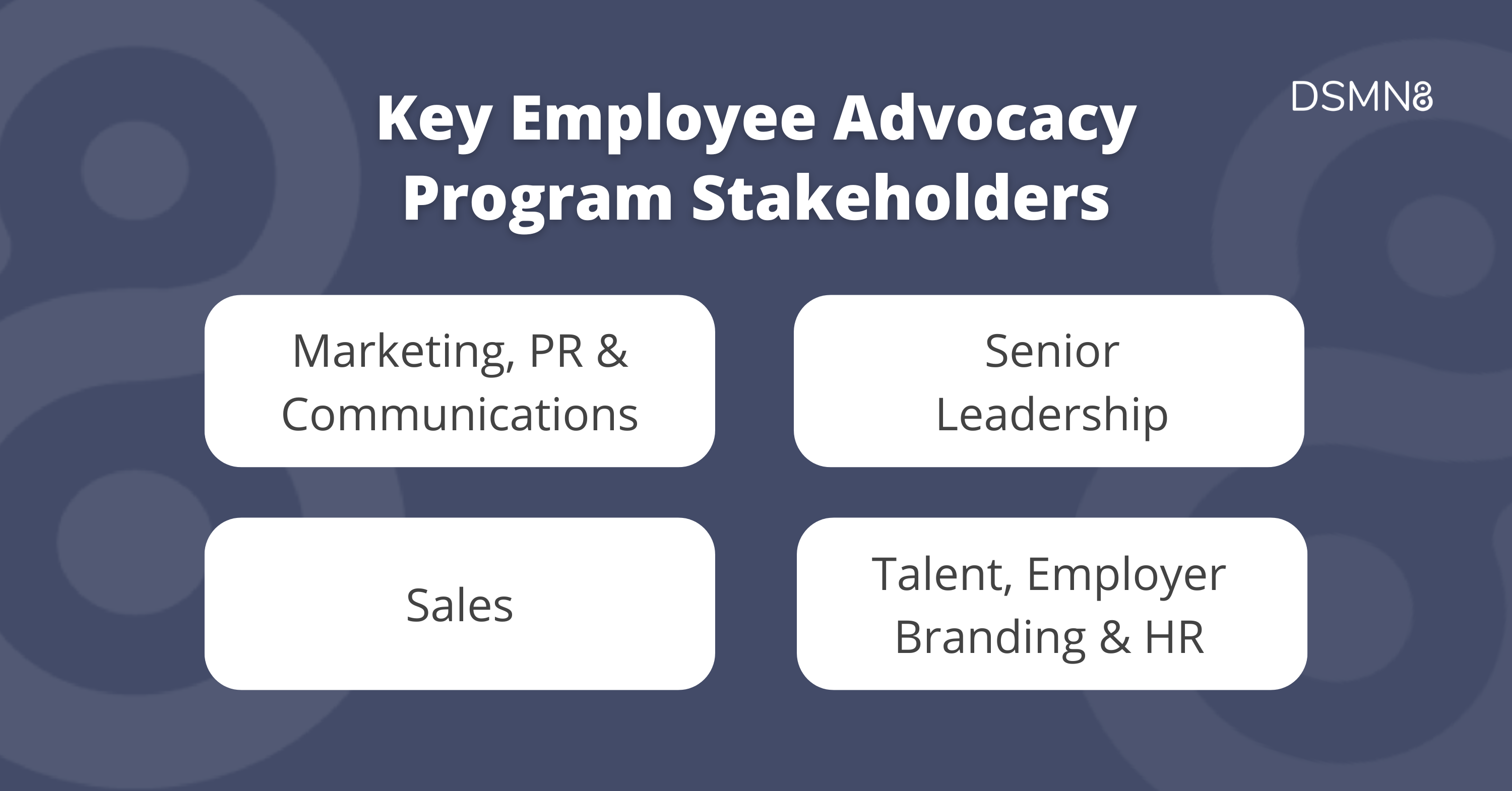
What area of a business does employee advocacy fit in?
The most obvious answer when deciding who should ‘own’ an employee advocacy program is to look towards your marketing and comms department.
After all, employee advocacy is a social media activity, right?
Here’s the thing:
Employee advocacy is a company-wide initiative, involving employees from many departments from senior leadership to sales to talent acquisition and HR.
While someone in a marketing or employer branding role will be a great person to lead or manage your program, we recommend having multiple stakeholders to ensure continued success.
In this article, we’ll cover why!
Don't Position Advocacy as 'Just Marketing'
If employee advocacy is seen as just ‘marketing’ in your organization, you’ll risk employees in other departments simply not caring enough to drive results.
For this reason, we recommend spending time considering how advocacy will benefit various roles within your business.
Most importantly, these benefits will need to be communicated to participating employees and their managers.
And the best way to get people outside of the marketing department involved and invested in the program is through their team leaders.
For example, if the Head of Sales is a stakeholder in your program, they’ll set the example for their team, and motivate them to continue participating.
More stakeholders = more drive for success.
When it comes to approaching these departments, go for sales first. They’re the most likely to see immediate results from employee advocacy (e.g. leads and sales), and have the most vested interest in your program.
Having a stakeholder in your sales team will help build the initial momentum to then scale advocacy throughout your company.
Different Departments Have Different KPIs
Of course, different departments in your organization have different goals, targets, or KPIs. But you’re all working together towards a shared goal: business growth.
Before launching an employee advocacy program, make sure you understand the targets and responsibilities of each business unit, and how employee advocacy will help those teams reach their goals.
Speak to the managers in each department to find out what their current pain points are, and discover how employee advocacy can help.
Use our ideal advocate profiles worksheet to help with this process.
Here are some examples:
Is your HR team looking to reduce cost-to-hire this year?
Employee advocacy can help with this, through word-of-mouth marketing on LinkedIn from employees. This reduces dependence on paid advertising for your new roles, and helps find the right talent via recruitment software or employee networks.
Do sales need help nurturing prospects in their pipeline?
Providing educational and informative content for salespeople to share on LinkedIn helps them become known as industry experts, and stay front-of-mind when a prospect is ready to buy.

Senior Leaders Wield Huge Influence
Senior leadership teams have huge influence on the success of employee advocacy programs.
Why?
People want to impress their boss.
If they see the C-suite engaging with their colleagues on LinkedIn, commenting on or liking their posts…
They’ll want a piece of that.
It’s just human nature!
Getting your company leaders involved will not only encourage employees to participate, but it will also generate better results from your program. It’s a win-win.
Our study of 11,107 employee LinkedIn posts revealed that the CEO of an enterprise organization using DSMN8 generated the same amount of LinkedIn engagement as their company page, with 98% fewer followers.
People trust people on social media. And your leadership team are the most likely to have built their personal brands from networking throughout their careers.
So how can I get my CEO on board?
Emphasize that their social media presence not only impacts employee engagement and company culture, but has a direct effect on business results.
82% of consumers are more likely to trust an organization whose CEO is active on social media. Transparency and authenticity are more important than ever.
The key takeaway here is that if you only manage to gain one stakeholder aside from marketing, make it someone in senior leadership, preferably the CEO.
This will set up your employee advocacy program for long-term success, in terms of results generated and employee participation.
Talent, Employer Branding & HR
This one is the next most important area of the business to have a stakeholder in your employee advocacy program.
Organization structure and job titles vary from company to company, but essentially, you’ll want a stakeholder whose job focuses on your people.
This person could work in talent acquisition, utilizing an applicant tracking system to recruit the right people to fill open roles. Or they could be on the employer branding side, focused on positioning your company as a great place to work by showcasing company culture via paid and organic campaigns.
If your company doesn’t have dedicated roles for things like employer branding, look to HR. Their roles will include elements of these functions.
Keep in mind that people in these roles aren’t only focused on attracting new recruits, but they’re also involved in the onboarding process, and maintaining employee engagement.
This is a great way to get HR buy-in: employees involved in an advocacy program are more engaged than those who aren’t. They’re also more informed about company news, and more aligned with company values and culture.
Getting HR involved and invested in the program will help you scale your program. Remember that inviting new advocates will need to be a continuous process, as employees leave your company, and new recruits join.
So make sure it’s part of your employee onboarding process. HR should have all the details on how your new starters can join the program, your updated social media policy, and any additional guidelines you’ve created.
Some employee advocacy programs are completely run by a talent acquisition or employer branding team.
Perhaps your marketing and PR is managed through an agency. In this case, having an internal stakeholder in your organization’s talent or HR department makes sense.
A successful example is Dropbox, whose employee advocacy program is run by Katherine Keenan, Talent Brand Program Manager. To find out how she launched Dropbox’s program, check out this episode of our podcast.
The best approach in our experience is to have a stakeholders in marketing / communications, senior leadership, sales, and someone who focuses on your company culture and recruiting, whether this is employer branding, talent acquisition or HR.

Employees are Stakeholders Too
As summarized in the graphic above, you’ll want to find stakeholders within these areas of your organization:
- Marketing, PR or Communications
- Senior Leadership / C-Suite
- Sales
- Talent, Employer Branding or HR
But there’s one more group of people to take into consideration: employees.
Employee advocacy doesn’t work if no-one wants to participate.
They need to understand how it benefits them, but also feel like they have a voice. In each stage of the journey, factor in time to gather employee feedback.
From finding out what training they may need, to gaining insights on what content their networks engage with most, employee feedback is invaluable when running an advocacy program.
The Result: Advocacy is Part of Your Company Culture
With stakeholders in the departments that benefit from advocacy the most, your senior leadership team, and HR, your employee advocacy program will become a key part of your company culture.
Employees feel valued for their participation, thanks to the feedback loop you’ve created, and engagement from senior leadership on LinkedIn.
Each department understands how employee advocacy supports their goals and KPIs, with a manager or team leader setting the example and motivating participation.
And finally, new recruits are made aware of the program and invited, as your advocacy program managers are aligned with HR to make this part of your onboarding process.
Additional Resources
More on Managing an Employee Advocacy Program:
Ready to get started with employee advocacy?
Schedule a call with one of the team.
Prefer to cut to the chase and explore the platform?
Roger that!
Book a demo of DSMN8, the #1 Employee Advocacy Platform.
Emily Neal
SEO and Content Specialist at DSMN8. Emily has 10 years experience blogging, and is a pro at Pinterest Marketing, reaching 1 million monthly views. She’s all about empowering employees to grow their personal brands and become influencers.




